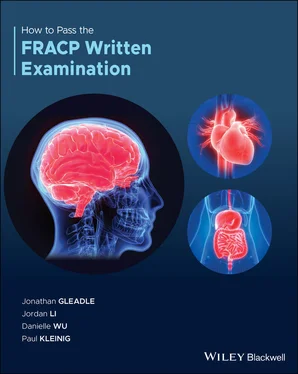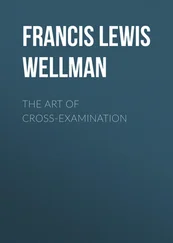There are two types of sunscreen: (i) Chemical sunscreens, which work by absorbing the sun’s rays. They contain one or more of the following active ingredients, oxybenzone, avobenzone, octisalate, octocrylene, homosalate, or octinoxate, (ii) Physical or mineral sunscreens act like a shield deflecting the sun’s rays. They contain the active ingredients titanium dioxide, zinc oxide, or both, which are safe for sensitive skin. Using sunscreen can decrease skin’s production of vitamin D.

Iannacone MR. Effects of sunscreen on skin cancer and photoaging. Photodermatol Photoimmunol Photomed 2014; 30: 55–61. https://onlinelibrary.wiley.com/doi/full/10.1111/phpp.12109
11. Answer: B
The skin is made up of three layers, the most superficial layer is the epidermis and the layer below is the dermis, followed by the third layer of subcutaneous tissue. The epidermis is further divided into five layers in areas of thick skin, such as the palms and soles: stratum basale, stratum spinosum, stratum granulosum, stratum lucidum, and stratum corneum. While in areas of thinner skin, the epidermis has four layers, without the stratum lucidum.
The dermis is further divided into two layers, the papillary dermis (the upper layer) and the reticular dermis (the lower layer) which contains the vasculature. The skin is highly vascularised; there is an extensive network of larger blood vessels and capillaries that extend from regional branches of the systemic circulation to local sites throughout subcutaneous tissue and dermis, respectively. Therefore, it is likely that the excision has traversed the reticular dermis to cause profuse bleeding. In addition, there is an extensive lymphatic network that runs alongside many of the skin’s blood vessels, particularly those attached to the venous end of the capillary networks.
12. Answer: D
Stevens Johnson Syndrome (SJS)/Toxic Epidermal Necrolysis (TEN) are severe skin disorders characterised by mucosal involvement, extensive skin necrosis and epidermal detachment. SJS is classified by <10% body surface area (BSA) involvement, Overlap syndrome 10–20% BSA and TEN >30% BSA. It is usually caused by antibiotics, anticonvulsants, allopurinol, and anti‐inflammatory medications commenced 2–3 weeks prior to presentation.
Supportive care has been shown to be the most important treatment for patients with SJS/TEN. It should consist of managing skin wounds, haemodynamic stability, electrolyte balance, maintenance of airway and pain control. Guidelines suggest that covering the denuded skin can improve skin barrier function, reduce water and protein loss, limit microbial colonisation and promote reepithelialisation.
Systemic steroids were considered to be the primary treatment option for many years, however recent studies have reported a lack of efficacy and in some cases worsened mortality from increased risk of infection, delayed healing and prolonged hospitalisation. The use of IVIG has had controversial conflicting results. A recent meta‐analysis showed no difference in mortality when comparing patients who received IVIG compared to those who received supportive care. Although some studies have showed that higher dosages of IVIG may lower mortality.
There have also been several case reports with positive results for TNFα inhibitors such as Etanercept in the treatment of SJS/TEN. There is one published case series of 10 patients who responded well with complete reepithelialisation, however it will need further studies to validate these results. Cyclosporine is an immunosuppressive agent inhibiting CD8+ T cells. One study found a significant and beneficial effect of cyclosporine when compared to supportive care. Although it seems to be a promising treatment, it is contraindicated in patients with severe renal dysfunction, infection, malignancy, and sepsis. Patients with SJS/TEN often have secondary infection, organ dysfunction, and other comorbidities, which limits its use.

Duong T, Valeyrie‐Allanore L, Wolkenstein P, Chosidow O. Severe cutaneous adverse reactions to drugs. The Lancet. 2017;390(10106):1996–2011.
https://www.thelancet.com/journals/lancet/article/PIIS0140-6736(16)30378-6/fulltext
13. Answer: F
14. Answer: A
15. Answer: E
16. Answer: G
17. Answer: H
Dermatological emergencies are usually accompanied by severe and often striking visual appearance and are often indicative of systemic illness with high morbidity and mortality, necessitating rapid diagnosis and treatment.
The SCARs (severe cutaneous adverse reactions) encompass a group of T‐cell mediated, type IV hypersensitivity reactions which are often stimulated by medications or their metabolites. SCARs include Stevens‐Johnson syndrome (SJS), toxic‐epidermal necrolysis (TEN), drug rash with eosinophilia and systemic symptoms (DRESS), acute generalised exanthematous pustulosis (AGEP), and SJS/TENs overlap.
SJS and TEN are now recognised as two points on the spectrum of the same pathologic process. SJS and TEN are rare SCARs which are characterised by significant epidermal and mucosal loss. Typically, SJS/TEN will occur 7–10 days after initiation a culprit drug, and classically starts on the face and trunk and rapidly spreads over a few days – lesions can be macular or targetoid and desquamate over time. Nikolsky’s sign, where rubbed skin leads to exfoliation of the outermost layer, is typically positive, and mucosal surfaces are often involved. Classification is by percentage of body area involved; less than 10% is SJS, between 10 and 30% is SJS/TEN overlap, and greater than 30% is TEN. Acute respiratory distress, bacteraemia, and other infections are common complications, and mortality is high. Treatment is by ceasing the offending drug, aggressive supportive care, and sometimes IVIG.
DRESS is characterised by a widespread rash – most typically a maculopapular morbilliform exanthem, i.e. the rash looks like measles – fever and visceral organ involvement. Hypereosinophilia is common as is facial oedema and lymphadenopathy – mucosa is spared. The rash usually develops greater than three weeks after starting a medication and persists after cessation. Cessation of the drug, supportive measures and prednisolone are the usual treatments. Fatality is lower than with SJS/TEN but approaches 10%.
AGEP has the lowest mortality of the SCARs, with some modern case series showing no fatalities. However, this drug rash is still striking, with widespread or skin fold erythema evolving to innumerable pinhead‐sized sterile pustules, and typically resolving within two weeks of drug cessation. AGEP is thought to be mediated through T‐cell activation of neutrophils. Spider bites have been thought to cause AGEP, and the rash shares similarities with pustular psoriasis, but with a more acute onset. Major morbidity and occasional mortality can usually be attributed to bacterial superinfection of the lesions.
Dermatological emergencies can also be caused by, or be indicative of, severe infection. Staphylococcal scalded skin syndrome (SSSS) is a highly feared complication of infection with Staphylococcus aureus secreting exfoliative toxin. Most commonly experienced by children, where fatality rates are lower, SSSS has high mortality rates in adults, of around 50%. Erythematous areas in SSSS typically develop around the face, neck, axilla, and perineum, and progress to flaccid bullae, mucous membranes are typically spared. Nikolsky’s sign is positive. Treatment is with antibiotics and supportive care, usually involving intravenous fluids and nasogastric feeding.
Читать дальше














